An interview with Christopher Hector
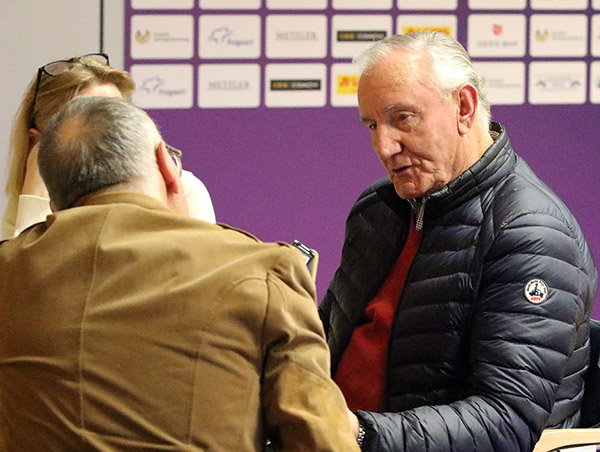
Klaus Balkenhol at Frankfurt (Photo Kenneth Braddick – dressage news)
Klaus Balkenhol was a great competitor, and a Gold Medal winning dressage rider. As a coach he was one of the most successful in the world of dressage, coaching both the American and German teams, and he is still in demand to help riders all over the world.
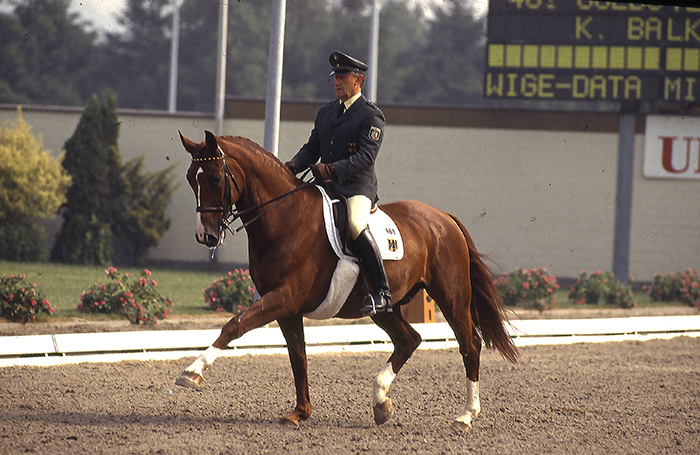
An Olympic gold medallist – Klaus Balkenhol’s wonderful Goldstern (Photo Roslyn Neave)
Perhaps even more importantly Klaus has emerged over the past two decades as an influential defender of correct progressive training, and his was one of the most important voices in the battle over the harsh methods of the practitioners of rolkur. When I caught up with him at the 2019Frankfurt show (my last show before Australia went into Covid lockdown), I was interested in his take on progress in the world of dressage…
Is dressage in a good place – a better place?
“I think so, better than it was ten years ago. It is really nice when you can see the horses and the riders in the warm-up ring and it is really good. Really good.”
And in the tests we saw here at Frankfurt, the Grand Prix and the Louisdor?
“The horses are better, many, many horses are better quality. In the tests, there were many little mistakes in the Louisdor Cup and in the Grand Prix.”
Jessica von Bredow Werndl – really high scores, but deserved…
But in the Louisdor, I thought the top two riders, Kira Wulferding and Jessica von Bredow-Wendl, were exceptional, really correct…
“Yes, I know the horses, and they were really good. The scores was really high, but they were deserved.”
Do you think dressage now is better than in the time when you were a rider?
“That was a different time, the breeding of the horses has changed so much. Now they breed really wonderful horses. My wish is that the people go a little slower with these horses, it is too early to have the horses under saddle when they are two-and-a-half, it’s not good for horses.”
“Then there was another time, ten years ago, when the riders went aggressive on the horses, that was a bad time, a really awful time…”
The time of Rolkur…
“Yes, but now it is much, much better, now they are presenting horses in a fair and good way. Presenting in that aggressive way has stopped, it is so much better than ten, or even five, years ago. The riders decided to educate the horses in accordance with the rules, it is based on the German Principles, the German way of education, that is good, but sometimes still, the horses are too young when they start with this education.
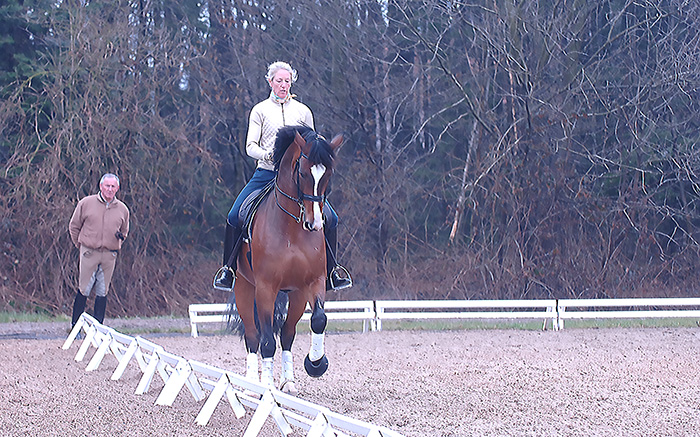
It is better to bring the horse into the sport a little bit later, maybe one year later. It depends on the character and ability of the horse, some can start earlier, some later. Is there one who is able to do the Bürgpokal at the age of seven? Another might need two years more – every decision on the way of educating the horse should depend on the horse’s ability, character and is the horse strong enough, in the body and the head. Strong in the tendons and the bone.”
“Next year the rule comes in that the horse cannot go out to a competition until it is three years old, that is a good thing. The classical rider educates the horse so it gets better and better, from the back, to the neck. But sometimes the breeders make a really good horse and the rider thinks, oh that is good I can work on that horse, and they work too early. That’s the biggest problem we have, it’s not classical riding! We need for the young horse when it is three and four is under saddle, simple riding, for a minimum of two years before the bones are better, the head is ready.”
“When you look now, you see some horses, they are eight and nine and they are not really regular in the extended movement, and that’s a problem that starts when the horse is really young, the horses are so talented, they have such quality that the rider exploits that, they are too quick to take advantage of what the horse offers. The horses are excellent, but the rider still has to say, we go step by step and take our time.”
“We need to think about the training system, we need trainers who can see, this horse needs more time than the other, but really all the horses need more time to grow.”
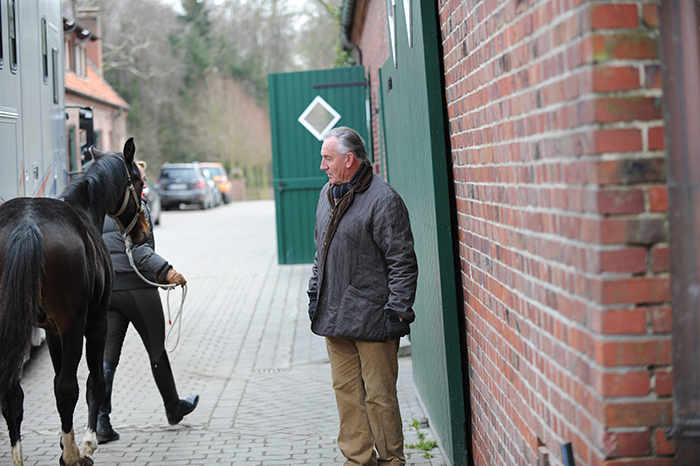
“The quality of the horses is excellent with movement, light horses who are really able to do piaffe, passage, the quality is there, the problem for the rider is not to exploit that and not to try to go too quick. The horses are excellent, but the rider still needs to be able to see, okay we do step-by-step and maybe sometimes we wait. Riders must see, we’ve got this level and now we work on this level for a while and not try to force the horse to the next level.”
“The breeders do a brilliant job, the problem is that the rider, the teacher, the educator, is not good enough. We need more trainers that are able to teach classical riding, teachers who can see this horse needs a bit more time than the other. The truth is all horses need more time, that is the biggest problem that we have, all horses need more time to grow.”
But it seems to me that in the era when you grew up there were more great teachers – Lörke, Schultheis, Günter – and there are not so many today…
“It is not that everything was better then with those great teachers, the problem is that there are many more riders and much more good horses today and when those riders decide to produce a horse for the Grand Prix then the chance of them making a mistake is much higher than 20 or 30 years ago because there are not enough teachers with the quality that the young riders get the feedback they need. You need many more teachers on a high level to take care of the young riders and the horses. The riders try to do it in the best way, but the chances are they will make mistakes and that’s a problem for the horse.”
“The basics for the young horse must be perfect and the problem is that we don’t have enough teachers and professionals who take the time to grow in the level of their education. We have what are called ‘Masters’ but they are not really masters of educating riders and educating horses, it’s a high level but not high enough. So we have got a lot of professionals that have done a great test and finished their education in the profession, but they don’t know enough about basics and educating a horse, teaching the horse to go to the next level, basics are much more important for the horse than training for piaffe or passage.”
“Five or six years ago we had people trying to do the third step before finishing the second, trying to achieve the position every judge likes to see, but not building the strength and the body level to do that in the right way – it’s only a show, it’s not a solid basis.”
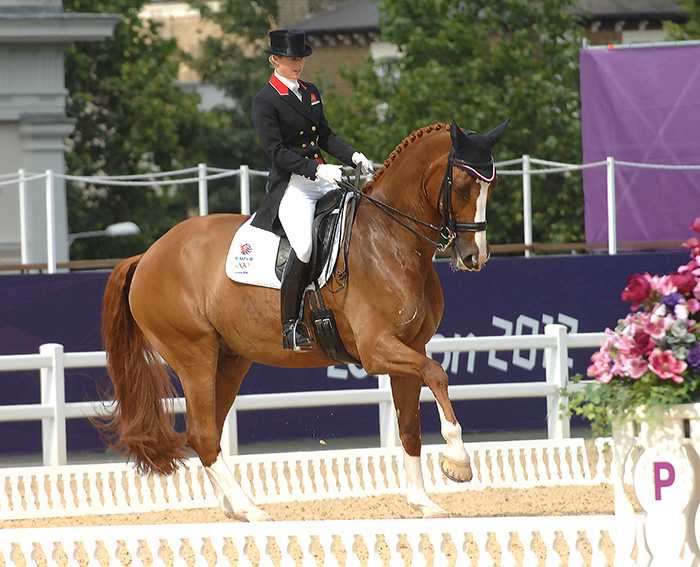
Laura Bechtolsheimer (now Tomlinson) and Mistral Horis – trained in the classical way
(Photo – Roslyn Neave)
“One important date in the history of dressage is the Olympic Games in London, there we can see that the whole nature of international dressage has changed and we have better riders, well educated horses with solid basics. The German team was very good,”
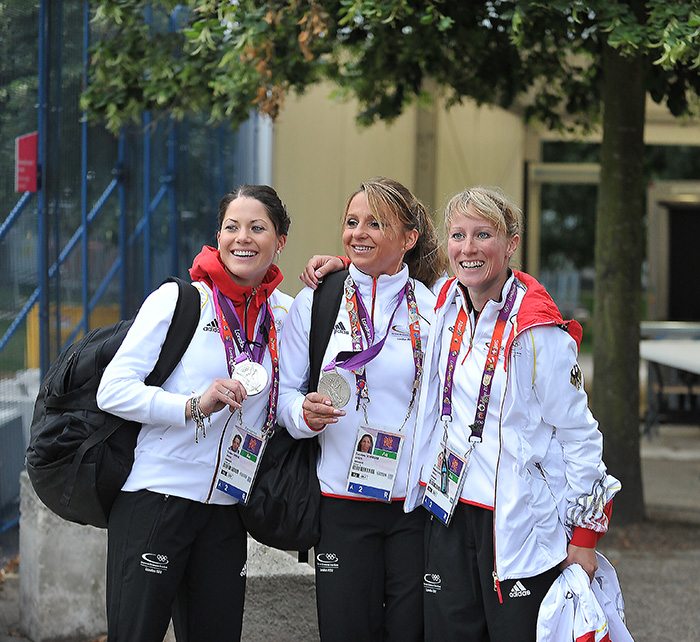
Kristina, Dorothee and Helen, happy in London…
Helen Langehanenberg, Dorothee Schneider, Kristina Sprehe and in the individual my daughter, Annabell. That was really good, and we saw it again at the World Championships and at the Rio Games, dressage sport is really coming up, no longer aggressive riding, classical riding more and more.”
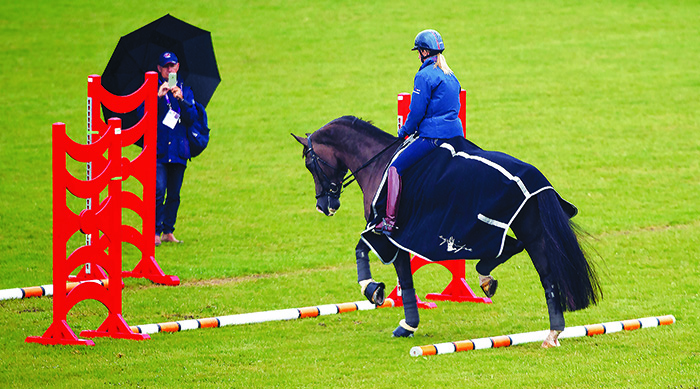
Charlotte and Valegro enjoy a workout on the morning of the Kür at the European Championships – Dirk Caremans image
“The English riders too, Charlotte Dujardin, Carl Hester and Laura Bechtolsheimer, they won the Gold Medal with solid basics. Valegro is a solid, educated horse. And I must say, from working in the stables of Bechtolsheimer, that there it was always classical riding. Dr Bechtolsheimer was a good dressage rider, before that an eventing rider, and Carl, he spent four years in the Bechtolsheimer stable.”
How does the rider know when he should take the next step?
“There are two ways to recognize when you can move on. One way is to use your head, your feeling, oh we have moved too far, we must make a step back or, no this is right, we can take the next step. Normally horses tell us, the horses talk to the riders and tell us, now it’s time to ask for something more. The second way is to ride tests, in competition, and to get the feedback from different judges – okay is that the right way? Or maybe there is a new way to pay more attention to some exercises, building more strength, but also making the movements better, more precise.”
“The good riders understand the language of the horse.”
Is it good for the horse to be taken out of the arena, into the country?
“Absolutely, always, always, the horse has to go outside. When we are making a Grand Prix horse, for the first two years my horses go in the forest, and they jump a bit, or it is good to go on the riding track, and they need to really canter on, conditioning the horse, but also the horse becomes looser in his body – losgelassenheit. We see it sometimes even at Grand Prix, the horse is not swinging, he is not loose enough in his body. Then again, many horses lack straightness. Or the contact is too strong – or nothing!”
“It is a worry, I see some horses that are really nice and relaxed, but they don’t get the good score, and other horses are not always regular, especially in the passage, but still they score too much. The problem a lot of the time is the judges, and the judges’ schooling is not good enough. We need one judge who can say ‘this is correct’, with all the people coming to him asking what is the correct way – but now we have many many judges and no leader. In my days, we had those good people, Eric Lette, or from the Spanish Riding School, Albrecht. The trainers, the riders and the judges, they sat together at Warendorf and five or six riders rode some tests, they looked at the scores and they discussed together.”
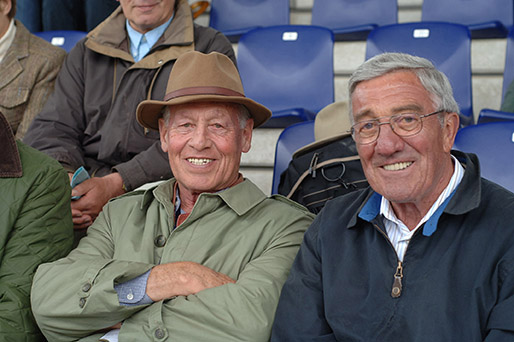
Harry Boldt and Bimbo Peileke in the stand at Aachen
“Now thirty, forty judges sit on the long side during the Grand Prix with just one judge to help them – we don’t have that discussion between riders, trainers and judges, there used to be more information for the riders from the trainers and the judges. Now there is not enough discussion of the movements and how they should be ridden.”
I can remember the old dressage arena at Aachen, and down one end the trainers would be sitting together, Mr Rehbein, Mr Theodorescu, Dr Schulten-Baumer, they would talk together, now when you go to a show, it is one trainer working with just their rider, there is not the same communication…
“When we had those meetings between the trainers and the judges, there was a schooling not only of the riders, or the trainers, but for the judges as well. The judges through their marks control the way of educating the horses, therefore they have to know exactly what is happening in the horse’s head, and the rider’s head, and is the way they are going the right way? Is the horse in rhythm? Is the horse in balance? The judges have to know to give the right feedback to the riders, so maybe there is more need to train judges so that they can give exact and precise feedback to the riders and trainers. Is the horse on the right way – or not?”
If there was one thing you could do to improve dressage in the world today, what would that one thing be?
“One thing to improve dressage and take it to the next level should be better education and schooling for judges and trainers as well, especially for the judges, because compared to former times we now don’t have so many judges who have competed on the Grand Prix level. It’s difficult, if you have never competed at the Grand Prix level, it is more difficult to understand what is going on in the head of the horse and the rider, so there is more need to teach and educate judges so they understand what’s going on in the horse’s body and head, and we need more contact and discussion between trainers, riders and judges. Maybe there is a need, if the judges are able, in terms of their age and body, for the judges to ride and get lessons in dressage. They should do that, but with good trainers. The other thing is there needs to be more attention to the scale of training… that is the key, the scale of training.”
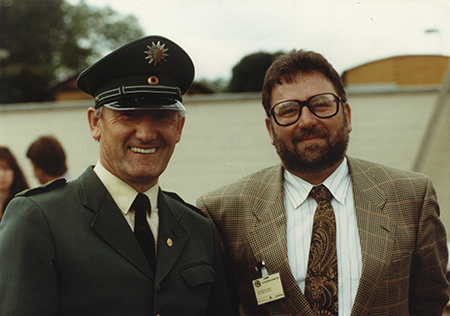
Those were the days my friends – my first interview with Klaus in the mid-80s
(Photo Werner Ernst)
My thanks to one of the world’s nicest press officers, Martina Brueske who assisted with the translation of some of the tricky bits…
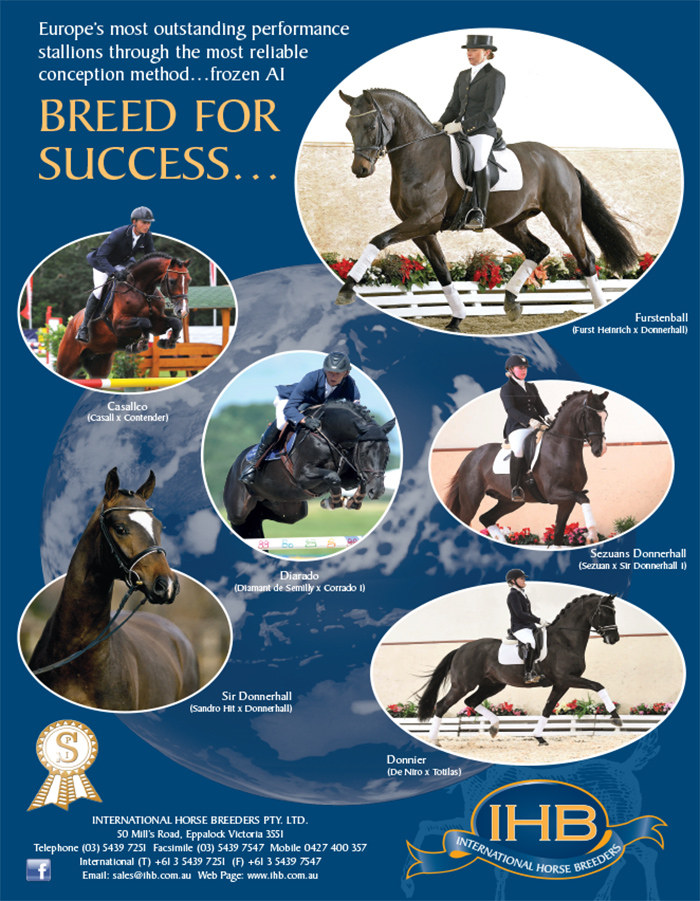



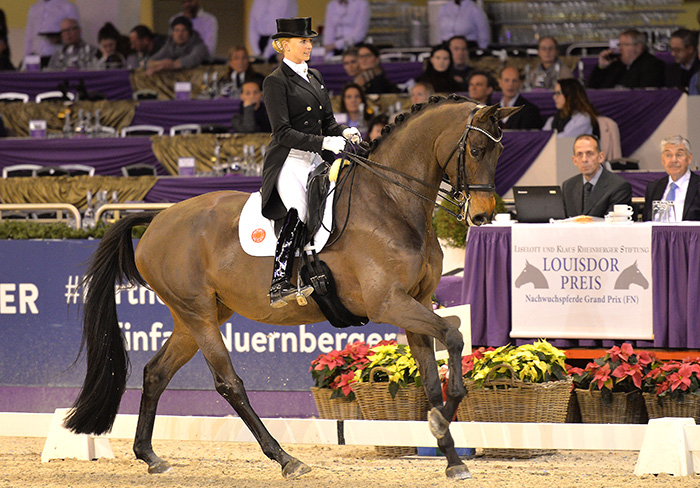
I wish he’d have commented on the US team, I’d love to know what he thinks.
It’s great to be able to read the opinions of these older, highly regarded trainers.
Excellent article.
Thank you Chris
Those were the days. The training scale was upheld and there were many wonderful trainers to progress the horses and riders correctly
Excellent article Chris. I loved his comments regarding judges and their responsibilities. Brilliant.
Thanks for highlighting the good and not so good progress of dressage training and the weakness of judge education. Well done
Please don´t mention Walter (“Bubi”) Günther as a trainer being in the same league as Schultheis. Günther produced “dressage robots” by breaking the souls of the horses. They were easy to ride even for weakér riders and his clients liked that.
I have ridden two of these poor creatures at the stables of Fritz Tempelmann who wanted to do Walter´s nice and gentle widdow, Maria, a favor by training and selling these horses after her husband´s death. The horses stood 23 hours in their boxes with hanging ears and no shine in their eyes. In the arena they performed all Grand Prix lessons very obediently, but mechanicly and without any joy of movement. Later when we were training with Willi Schultheis in Warendorf while he was national trainer, we heard some of his remarks about “Bubi” that made very clear how much he disliked him.